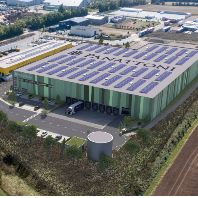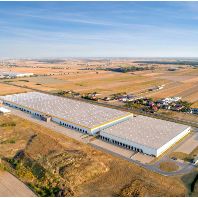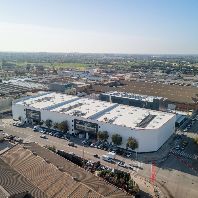Rental values in the Irish office and industrial sectors have grown for the first time in five years, according to the SCSI/IPD Ireland Quarterly Property Index. At 0.2% for offices, and 1.6% for industrials, the growth is the first sign of recovery in the occupier market, which has seen rental values written down by over 48% since December 2008.
The improvements in occupier demand will come as welcome news to a market that is reliant on high income yields. Income returns from Irish property are some of the highest measured globally by IPD, in excess of 10% on an annual basis, which has driven returns, despite continuing falls in capital value.
These income yields have attracted the attention of international investors keen to take advantage of the heavily discounted market that has now delivered higher returns than the UK for the last five quarters. Total returns rose to 1.3% in the first quarter, compared with 0.9% in Q4 2012. Capital values continued to decline, but by a reduced rate of 1.0%, compared with 1.5% in Q4 2012.
However, property returns were still lower than those of bonds, at 5.4%, and equities, at 15.9% (JP Morgan Ireland 7-10 year, MSCI Ireland).
The first quarter of the year also saw limited signs of capital growth in selective sectors. Offices in Dublin’s Docklands saw capital values grow by 2.2% in Q1 2013, their second quarter of positive growth, and after declines of over 55% from June 2007. Improvements have also emerged in Central Dublin, where values grew for the first time since the downturn, by 0.3%, while rental growth was 0.3%, positive for the first time in four years.
This rental value growth in the Central Dublin office sector has contributed considerably to the reversal in capital declines. The fear for many investors into the market is that if units cannot be let, a market income return of 10% is irrelevant.
Both are at the prime end of the Irish office sector with large, modern, well-let and well-connected assets. Both outperformed the 1.3% total return delivered by the City office market in London (according to the IPD UK Monthly Property Index), with the Docklands returning 4.8%, and Central Dublin 2.8%.
A number of 'big name' international tenants have moved to Ireland over the last two years, attracted by improved Irish competiveness, low corporation tax, a well-educated young workforce and heavily discounted rents – and this has started to be reflected in the occupier market.
Though recent quarters have shown improving returns in prime areas of the market, helped by reforms implemented by the government last year and stability in the Irish economy have led to more confidence amongst investors, this has been limited to mainly office stock, and has still not been reflected at the headline level.
Office values continued to decline, albeit only very slightly, by 0.04%, while retail and industrial units saw falls of 2.3% and 1.2% respectively. In the retail sector capital declines actually accelerated, from 2.2% in Q4 2012, as consumer confidence remains low and austerity cuts continued to take hold. The main shopping streets in Dublin, Grafton Street and Henry and Mary Street saw values decline by a further 3.6% and 1.2% respectively.
Retail units saw rents falling by 1.0%, which dragged down the all property rental value movement to which was a negative 0.2% at the headline level for Q1 2013.
Roland O'Connell, President, Society of Chartered Surveyors Ireland, said, "Good tenant demand combined with no new construction has resulted in a looming shortage of prime office space. This will become increasingly apparent over the remainder of this year. Consequently, demand from investors is not limited solely to prime income-producing buildings but also older, well located buildings which could be refurbished to modern standards.
“In other words, it is already evident that demand is beginning to broaden. Despite the shortage of prime stock, overall vacancy rates will remain relatively high as much of the oversupply is poorly located or in partly occupied buildings which may not yet be ready for refurbishment.”
Phil Tily, IPD Managing Director for UK and Ireland, said, “Though restricted to prime areas of the market, these are the first signs of headline level growth in Ireland for the last six years, which cannot be anything but welcome news for a market that has suffered the deepest property downturn on record.
“For investors willing to move up the risk curve, Ireland presents considerable opportunities, with income returns some of the highest we measure globally. Demand is likely to be for prime stock, modern, well-let and well-located, and, as in the UK, prime assets offering more income security will lead the way.”
Source: IPD












